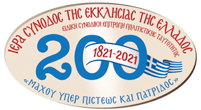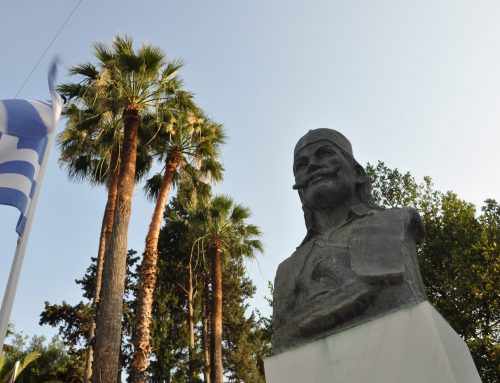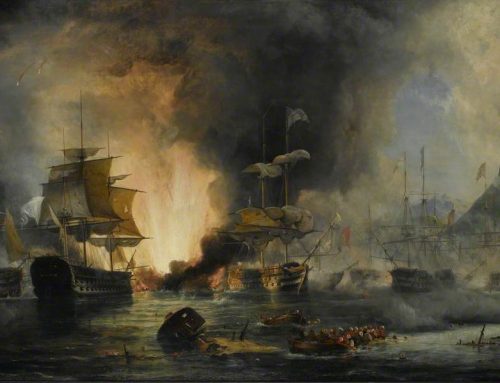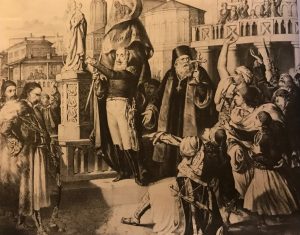

The bicentenary of the revolt of Alexandros Ypsilantis is an opportunity to recall one of the pioneers of the National Uprising and leader of the Society of Friends (“Filiki Etairia” in Greek). On February 22, 1821, Ypsilantis crossed the Pruth and passed from the Russian territory to Moldowallachia (Trans-Danubian Principalities).
The plan of the Society of Friends was to make an encircling move with Constantinople as its final objective. Prince Alexandros Ypsilantis, garde-du-corps of the Czar and heroic officer of the Russian army, assumed the task of stirring the Greeks of Moldavia and Wallachia as well as the local Romanian population into action. The area was chosen because there was no numerous Turkish army there. The rulers appointed by the Sublime Porte (the Sultan) were Christians and typically Phanariot Greeks. At the same time, the Bishops and headmen of the Peloponnese and other Greek regions had been notified to be ready to move on March 25, the day of the Annunciation of the Mother of God. Moldowallachia and the Peloponnese were part of the initial pincers which would squeeze the Ottomans.
On February 24, 1821, Alexandros Ypsilantis, offspring of a rich family with origins from Pontus, declared the insurrection of the Greeks in Moldowallachia. The local Romanian population showed no willingness to take part in it and the young Greeks who followed Ypsilantis were killed or captured by the Turks in Dragatsani on June 7. What is worth retaining in our memory from that insurrection is the famous Declaration.
24.02.1821 From the General Military Camp of Iaşi Alexandros Ypsilantis sends out to the Greeks a wonderful Declaration under the title “Fight for Faith and Fatherland”. The ideological pillars of that first revolutionary document of 1921 are three: respect for the Orthodox Christian faith, the diachronic continuity of Hellenism from the Antiquity to 1821, and adherence to the democratic ideals and the need to have all kinds of tyrants removed.
The Declaration of February 24 states: “Let us raise the sign through which we are always victorious! I mean, the Cross, and thus let us avenge the Fatherland and our Orthodox Faith for the impious contempt shown by the impious”.
According to Ypsilantis, the flag should bear the sign of the Christian Cross, with the succour of which the Greeks are always victorious. Indeed, his flag had a representation of Saints Constantine and Helen on it, with the motto “IN THIS SIGN THOU SHALT CONQUER” («ΕΝ ΤΟΥΤΩ ΝΙΚΑ», in Greek) over three stripes, one red, one white and one black.
The diachronic course of Hellenism is present: “Let us give a battle between Marathon and Thermopylæ … The blood of the tyrants is welcome under the shadows of Epaminondas from Thebes and Thrasybulus from Athens”.
Faith in democratic values is clearly present: “The Nation will assemble and convene its Elders and it is that Supreme Parliament that all our acts will be accountable to”.
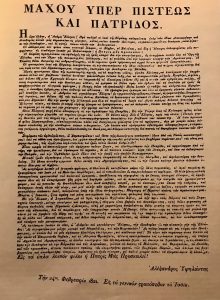
Picture no. 1: The “ephor general of the authority” Alexandros Ypsilantis raises the flag of Independence in the central square of Iaşi. Imaginary representation by V. Kaltzer (Athens, Benaki Museum)
Picture no. 2: Ypsilantis crossing the Pruth. Imaginary composition by Peter von Hess, who depicted Ypsilantis wearing the uniform of the Sacred Band (Athens, Benaki Museum)
Picture no. 3: The famous Declaration of Alexander Ypsilantis, which he launched on February 24, 1821, calling upon the nation to proceed to a revolution for its liberation (Athens, National Historical Museum)
